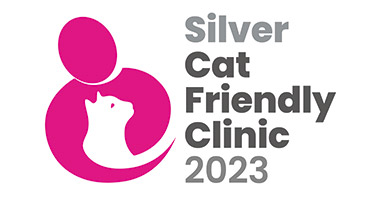Neutering Information
What is neutering?
Neutering is a procedure carried out by a veterinary surgeon with your pet under general anesthesia. The surgery involves the removal of the reproductive organs and is different depending on sex and species. Males are castrated – this means the testicles are removed. Females are spayed, an ovariohysterectomy procedure to remove both the ovaries and the uterine body (womb).
Neutering has benefits that not only apply to dogs and cats but also to other animals such as rabbits.
What are the benefits of neutering?
• Spaying prevents females coming into season, when they may attract unwanted male attention, become pregnant or have false pregnancies and prevent infections of the womb (pyometra) that can be life threatening.
• Neutering prevents the risk of testicular cancer in males and uterine infections and cancers in females.
• In male dogs and cats, neutering can reduce urine marking and roaming.
• Animals don’t respect family relationships - siblings will mate. This increases the risk of offspring with birth defects and deformities.
• Vet fees for problems during or after pregnancy and birth can be expensive. Offspring might need veterinary attention too.
• Neutering can adjust your animal’s behavior but it is best to speak to a veterinary surgeon about the behavior before neutering.
• Neutering doesn’t mean that your animal will put on weight. You will be advised on this following the surgery.
When can my animal be neutered?
It is best to book and have a consultation with a veterinary surgeon to discuss the pros and cons of neutering and discuss when is best for your animal as breed can affect the recommendation. However, we provide these basic guidelines:
Spaying dogs and cats
Pros
- Preventing un wanted pregnancies
- Preventing false pregnancy
- Preventing Pyometra (life threatening infection of the womb)
- Prevents ovarian and cervical cancer
- Reduces risk of mammary cancer
Cons
- Increased weight gain – this is preventable if monitored
- Increased risk of urinary incontinence, this can be treated with medication and less of a risk if they have had a season before the spay
- Large breed dogs can have an increased risk of bone cancer if spayed young.
Castrating dogs and cats
Pros
- Preventing testicular cancer
- Preventing benign prostate enlargement
- Reduce urine marking and roaming, this will decrease the chance of straying and possible traffic accidents.
- Reduces behavior of aggression and risk of fighting. This will prevent the spread of FIV in cats.
Cons
- Increased risk of prostate cancer – a very rare condition compared to benign prostatic enlargement.
- Large breed dogs can have an increased risk of bone cancer.
- Change of behavior can be an issue if dog is already anxious.
Dogs
Male dogs can be castrated from 6 months of age. Large breeds we recommend waiting until they are older.
Female dogs are best spayed 3 months after the 1st season to reduce the risk of urine incontinence and allow more normal growth. They can be done before the 1st season, but this should be discussed with a veterinary surgeon before booking the operation. If they are spayed after they have had 3 or more seasons, there is less impact on the reduction of mammary cancers.
Male dogs can be given a chemical implant (similar to a microchip) that lasts around 6 months.
Cats
Cats both male and female can be neutered after they are 3 months of age. There are no specific timings for cats. Cats can be spayed while they are in season.
Rabbits
Male rabbits can be castrated from 4 months of age onwards providing they weigh more than 1kg.
Female rabbits we recommend waiting until they are 6 months of age. They can become pregnant from 4 months onwards and should be kept away from males until spayed. Individual cases can be discussed with a veterinary surgeon.
Ferrets
Neutering a male ferret is different to cats and dogs. It is more likely that the veterinary surgeon will recommend a vasectomy. This involves removing a section of the sperm duct to prevent them from being able to impregnate the female.
They can also have a hormone implant placed. It is best to book an appointment with a veterinary surgeon to discuss these options in detail.
Female ferrets come into season from March to September. They will stay in season either until mated or until day length shortens. During this time, they are subject to high levels of the hormone oestrogen. This can lead to a life-threatening anaemia and female ferrets can die unless brought back out of season.
There are several different ways to stop a female ferret coming into season:
Mating her with an intact (uncastrated) male – leading to pregnancy
Mating her with a vasectomised male to bring the female out of season
Giving her a hormone injection implant.
It is best to discuss the options in more detail with a veterinary surgeon. Please contact to arrange an appointment if you wish to discuss neutering further.



